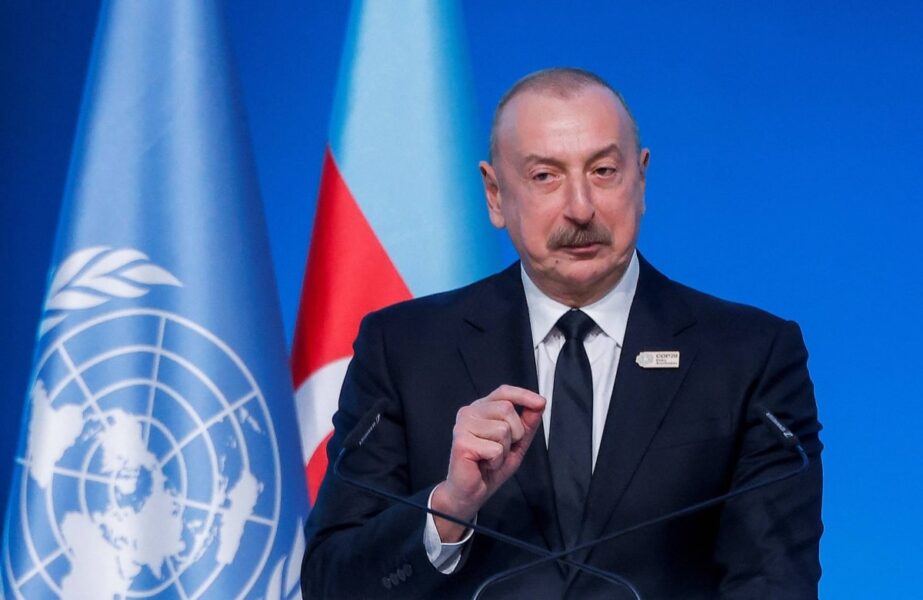Russia’s invasion of Ukraine continues to underscore the importance of energy security. Renewables play a key role in strengthening that security and diversifying energy sources.
The share of renewables has been rising across Europe, but it is doubtful that several countries, particularly the largest economies, will meet the EU’s 2030 targets.
Upping the amount of renewables used to heat and cool buildings is especially important, as these uses account for nearly half of the EU’s total energy consumption according to Eurostat.
So how much of Europe’s heating and cooling energy comes from renewables? And which countries are leading the way?
In 2023, the share of renewable energy in heating and cooling reached 26.2 per cent in the EU, closely mirroring the proportion of renewables in the bloc’s total energy use.
But this share varies widely across Europe – ranging from just 8 per cent in Ireland to 84 per cent in Iceland. Among EU members, Sweden and Estonia reported the highest shares, both at 67 per cent.
Why do some countries use more renewables in heating than others?
Renewable sources in the dataset include solar and geothermal energy, biofuels, the renewable part of waste, and ambient heat captured by heat pumps for heating.
Several factors explain the differences in renewable energy use for heating and cooling, Professor Pawel Oclon of Cracow University of Technology in Poland tells Euronews Green.
These include climate conditions, resource availability, and the state of energy infrastructure. Nations with existing fossil fuel systems face tougher transitions. Policy support, investment costs, and urban space also influence progress.
Experts from the Institute for European Energy and Climate Policy (IEECP) – Ivana Rogulj, Jean-Sébastien Broc, Filippos Anagnostopoulos, Tomislav Novosel, Indriany Lionggo, and Stavros Spyridakos – say the extent of district heating is another key factor.
Countries with a high share of district heating tend to have a smoother pathway toward decarbonising their heating systems. “It is easier to replace one large gas boiler with a heat pump, biomass boiler or waste heat than to replace thousands of individual boilers with heat pumps,” they explain.
Nordic and Baltic countries dominate the top
Nordic countries, except for Norway, and the Baltic states lead Europe in the use of renewable energy for heating and cooling. All reported shares of 54 per cent or higher, more than double the EU average of 26 per cent.
Rana Adib, executive director of REN21, a global network of governments, industry experts, NGOs, and academics, explains that these nations tend to have advanced district heating systems, many of which run largely on renewable sources such as geothermal energy, waste heat or, more controversially, biomass.
Norway, by contrast, had a significantly lower share at 34 per cent. However, the IEECP experts suggest that Eurostat’s data on Norway may be misleading.
“Renewable electricity used to drive heat pumps is not accounted for in the share for heating and cooling to avoid double counting,” according to Eurostat.
The experts point out that more than 90 per cent of Norway’s electricity comes from hydropower and wind. “The dominant source of heating in Norway is electricity,” they say.
Major Western European economies lag behind
Several Western European countries, including the EU’s four largest economies, show significantly lower incorporation of renewable energy in heating and cooling.
Among them, only France (30 per cent) ranked slightly above the EU average of 26 per cent, while the rest fell below. These include Italy (22 per cent), Spain (21 per cent), Germany (17 per cent), Belgium (11 per cent) and the Netherlands (10 per cent), and Ireland (8 per cent).
According to Statista, renewable energy accounted for just 7.5 per cent of heating and cooling in the UK in 2018.
Adib notes that oil remains common in rural heating in Ireland, due to weak policies and minimal district heating. “Studies have shown that 54–57 per cent of total heat demand in Ireland could be met through district heating networks, yet implementation remains limited.”
The Netherlands has long relied on natural gas and has only recently begun a major effort to phase out gas boilers, she adds.
“Belgium also relies heavily on gas and suffers from slow building renovation rates and fragmented regional policies that hinder coordinated energy action.”
She attributed the low share of renewables in Germany, France, Italy, and Spain to the widespread reliance on individual gas boilers. The IEECP experts further note that electric heating has been promoted in France due to the high availability of nuclear power.
Austria (39.4 per cent) represents a leading example among Central European countries in the deployment of renewable energy for heating and cooling. “This strong performance is the result of a well-established tradition in the use of biomass – both in individual heating systems and within extensive district heating networks,” the IEECP experts say.
Most EU candidate countries reported a higher share of renewable energy use in heating and cooling compared to the EU average, with the exception of Albania (23 per cent), which fell just below. Montenegro, for instance, reached an impressive 67 per cent.
Is Europe’s renewable heating progress enough?
Over the past two decades, Europe has made notable progress in increasing the share of renewables in heating and cooling – rising from around 11.7 per cent in 2004 to approximately 26.2 per cent by 2023, its highest level yet. But is this progress enough? Experts think not.
“While this growth is noteworthy, it remains insufficient,” Oclon says.
Referring to the EU’s non-binding target of a 49 per cent renewable share in buildings by 2030, Adib adds: “This pace – averaging about one percentage point every two years – is far too slow to meet the EU’s climate and energy targets.”
IEECP experts emphasise the significant differences in progress among countries. “Many countries are not currently on track to meet these obligations,” they say.
The line chart above illustrates just how much progress varies across Europe.
What policies can get European countries on track?
Prof Oclon recommends increased investment in research to enhance the efficiency of renewable energy system technologies, including photovoltaic panels, solar thermal collectors, heat pumps, and energy storage systems.
Adib of REN21 says there are several key barriers to progress, including a lack of strong policy focus on the sector, the widespread use of gas boilers, slow development of infrastructure compatible with renewables, and inconsistent or inadequate incentives.
To accelerate the deployment of renewable heating, she recommends targeted policy action focused on three key technologies: electric heat pumps, decarbonised district heating, and solar thermal systems – both rooftop and large-scale.
Is the EU still shifting away from Russian gas?
The EU’s energy strategy is built on three core pillars: saving energy, producing clean energy and diversifying its supplies. This includes reducing dependency on Russia.
To that end, the share of pipeline gas from Russia in EU imports fell sharply – from more than 40 per cent in 2021 to around 8 per cent in 2023 – following the invasion of Ukraine in early 2022.
When combining pipeline gas and LNG, Russia accounted for less than 15 per cent of total EU gas imports, according to the European Commission. However, this share rose to 18.9 per cent in 2024.
Source: https://www.euronews.com/green/2025/04/05/eight-countries-in-europe-use-renewables-for-more-than-half-of-their-heating-and-cooling-n



